With our March 2018 Conference only weeks away there is a growing excitement about what the various speakers will bring.
We have known Bernard Trainor since he first captured our imagination at the Conference over a decade ago. We now find his Californian compositions more concentrated and spare with essential elements playing key roles. In recent times, when searching for inspiration and to discover the sense of place, Bernard takes to paintings and contemplation.
Can it be that this painting of Bernard’s …
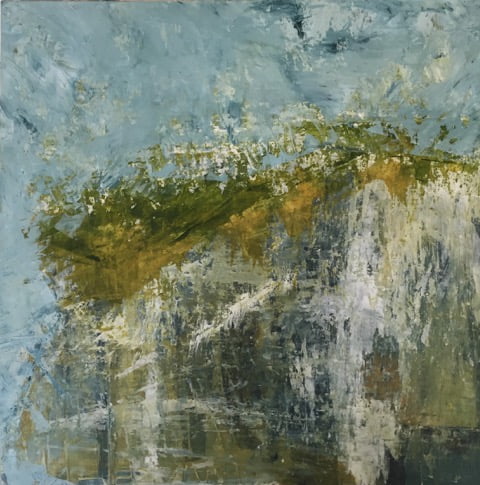
Art by Bernard Trainor
.. has inspired this lovely arrival scene at the Schoendorf property? Simple architectural elements are dominated by a great tapestry of nature’s colours and surmounted by a mountain range.
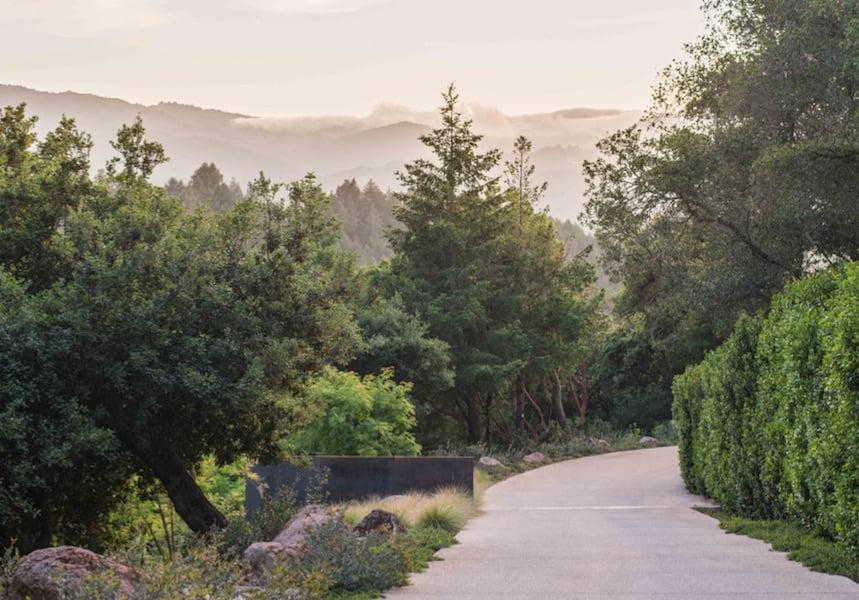
Design Bernard Trainor
Trainor says,
“it is only by celebrating and building upon the patterns of place, rather than manipulating it into something it is not, [that] .. ideas are expressed with clarity and imbue landscapes with a true sense of place.”
As I learn more about Sam Cox and his naturalistic gardens, I’m enchanted by his love of native plants and their roles. In this garden on the Bellarine Peninsula, striking spotted gums are profusely supported by abundant ground hugging plants such as Correa, Rhagodia, and Lomandra longifolia —
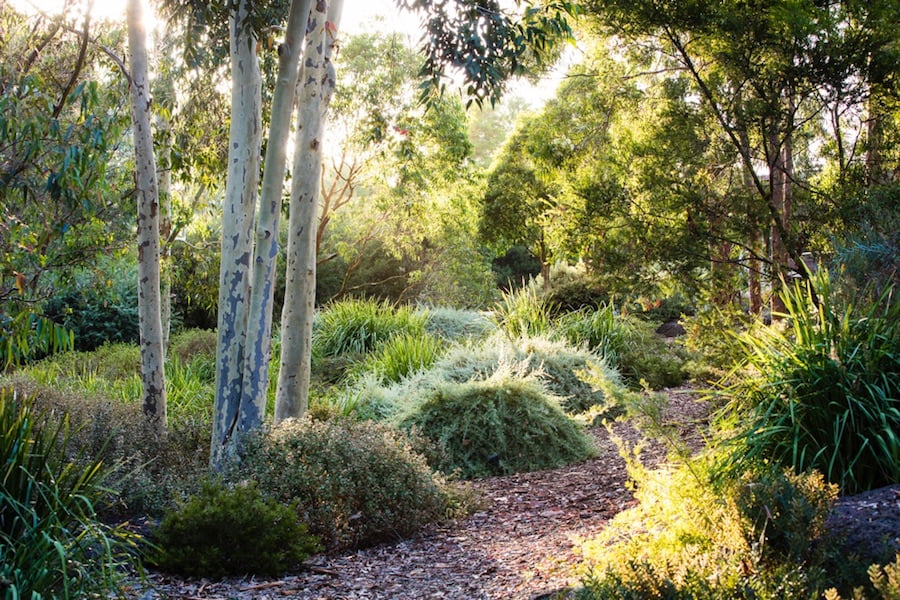
Design Sam Cox. Image by Claire Takacs
The ebullient Professor Cassian Schmidt, Director of Hermanshof Gardens in Germany, is at the forefront of the naturalist planting school in Europe. A large range of seed mixes enable landscape ecologies to be matched thereby minimising inappropriate plantings, with all the attendant maintenance and replanting issues.
We initially sounded out Piet Oudolf for this Conference however, when I visited him in the Netherlands, he told me:
“I’m now too old, I don’t like talking and I have no sympathy for native plant enthusiasts who embrace a type of botanical genocide.“
Cassian Schmidt is immensely keen to see our flora and to discuss the potential for his perennial plantings which he says have universal application. He brings with him a major bonus, Bettina Jaugstetter, (his wife) who does wonderful workshops and she is well known for being exceptionally clever and very funny!
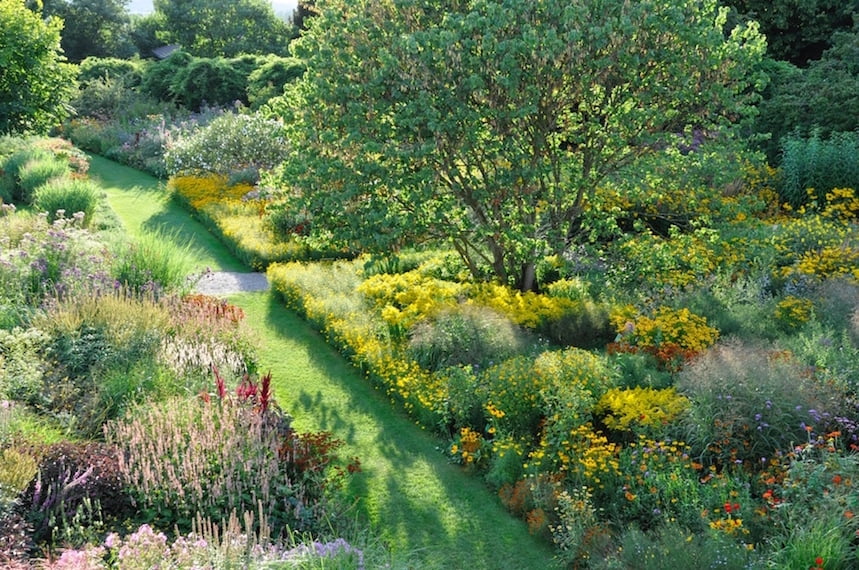
Beetstauden (for sunny places in your garden)
Kathryn Gustafson has played a key role in landscape architecture in North America, Europe and now increasingly, in Asia. Her perspectives provide a landform or sculptural approach, it’s about movement, and the capturing of elusive moments of interaction between man-made environment and nature.
She is very excited by the fresh energy and enthusiasm she finds in Asia with its wonderful tropical plants. She has been described as the grande dame of landscape architecture and that made me think of Dame Judi Dench in the theatre world but that’s a poor comparison. Gustafson has very strong and passionate beliefs founded on deep thought and extensive experience from both her North American and European offices. Peter Watts visited the Diana Princess of Wales Memorial Fountain and said that her work was,
“unbelievable, exquisite, joyful, playful, ..incredibly good and works superbly for both adults and children.“
Finding outstanding women who are great speakers and keen to present and share their philosophies and experience is not easy. We are absolutely thrilled to have Kathryn Gustafson.
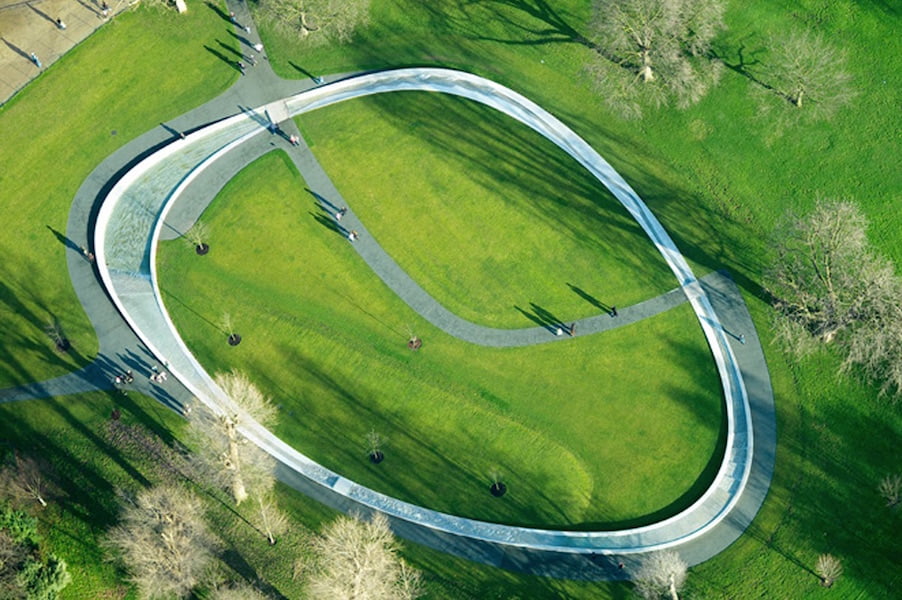
The Diana Princess of Wales Memorial Fountain, London. Design Kathryn Gustafson
Speaking of outstanding women how lucky are we here in Australia having Dr Kate Cullity of, Taylor Cullity Lethlean (TCL). Perry Lethlean described her as,
“part artist, sculptor, botanist, and landscape architect. Where she excels is in the beauty of making small things and in the crafting and making of things.”
This approach has led to many wonderful projects that draw inspiration from the Australian landscape.
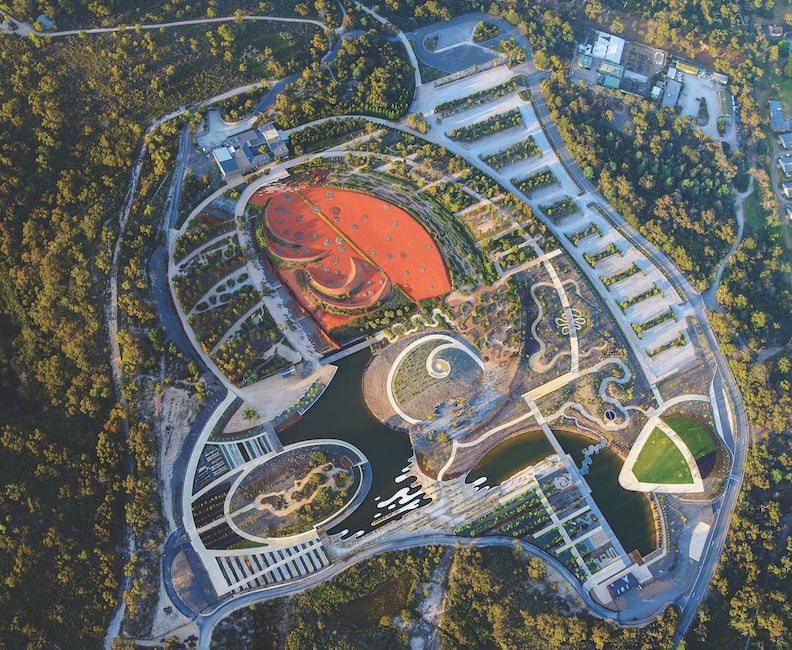
Australian Garden Cranbourne. Design TCL
The Australian Garden, Cranbourne, is often described by our overseas speakers as
one of the great modern gardens of the world. What a privilege it is, to have
Kate Cullity describe how it was conceived.
Andy Sturgeon describes himself as a design junky as is evident with all his work. He loves working with natural materials like timber and stone whenever he can since he finds them more enduring and appropriate for the timeless textures and excitement of great plantings.
Andy has a very busy practice stretching from Hong Kong, Africa, Russia and the Middle East but his principal work remains in the UK — both public and private.
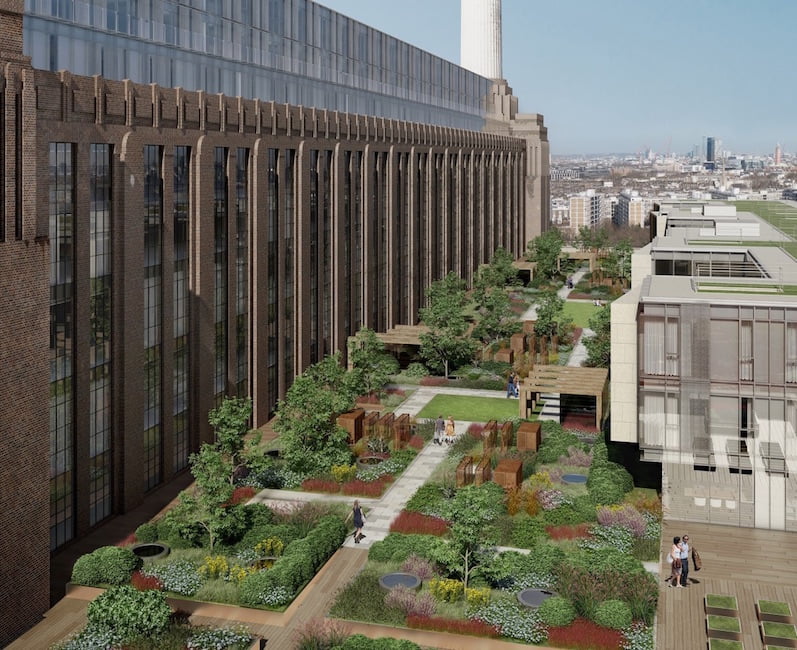
Battersea Power Station garden. Design Andy Sturgeon
While Andy Sturgeon is best known for his private gardens and his great haul of Chelsea Flower Show medals, I love these in-fill ‘garden rooms’ at the Battersea Power Station, on the Thames in London which create a wonderful sense of identity and harmony for this vast complex. The old Power Station is a listed building and one of the biggest brick buildings in the world. The coal-fired power station was decommissioned in 1975 and 1983 and has now been extensively rejuvenated with mixed uses which include residential.
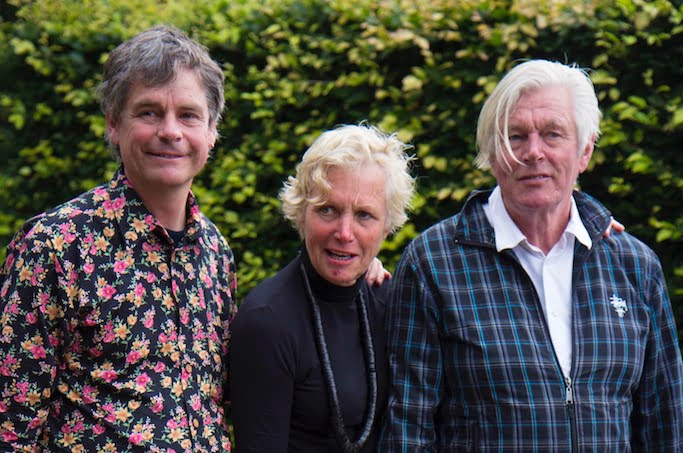
Noel Kingsbury, Piet and Anja Oudolf at Hummelo, in the Netherlands
While on the topic of naturalistic gardening, the leading writer and protagonist on the subject in the northern hemisphere has been Dr Noel Kingsbury who with over two dozen books and so many other ways has promoted new and innovative gardening. It was Noel who introduced the world to modern Dutch and German planting design and he is the acknowledged expert on the contribution made by Piet Oudolf and his contemporaries. He has completed four books with Piet Oudolf.
Kingsbury designs both gardens and public spaces, runs a nursery and pursued research at Sheffield University. Beneath his mischievous, boyish grin, there lurks a mind ceaselessly playing with ideas, people and cultural movements. When we published From the Country — the anthology of Tommy Garnett’s writings nearly twenty years ago — Noel responded with a closely argued very lengthy book review in Hortus, the superb English literary journal. When I mentioned that we were taking a tour to Argentina recently, Noel immediately responded with advice on how to contact the young designer Amalia Robredo, one of his ardent followers, who had just moved back to Buenos Aires from Uruguay. So many fingers in so many pies!
We therefore keenly look forward to introducing this Renaissance Man with his huge range of interests. At the least, we will learn much more about naturalistic gardening as well as the prospects for male gardeners, of becoming an endangered species! (To be addressed with his second presentation).
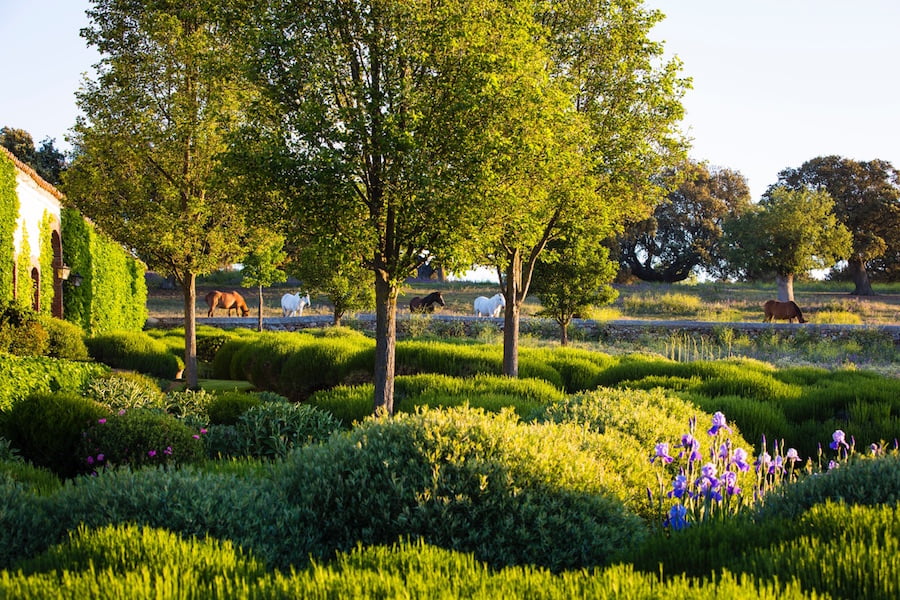
Design Miguel Urquijo with Renata Kastner
The Spaniard Miguel Urquijo reminds me of the Chilean Juan Grimm with his Latin passions and total absorption with plants. In Spain, he contends with scorching summers and freezing winters but always aims to create gardens as things of beauty throughout the seasons. To this end, he works on structure, the interplay between light and shade and mass and void.. sequencing, contrast, rhythm, repetition, connection and fluidity within the garden..
In this garden at Salamanca, Spain, Miguel Urquijo with Renata Kastner (his wife and partner), developed a superb garden which echoes, contrasts and complements the larger landscape. Miguel fell in love with plants when studying biology while Renata underpins his work with expertise in horticulture and landscape.
I have only briefly mentioned the speakers for our Conference. This year there are a total of twelve presentations by overseas speakers and two by Australians. Time and space prevent a discussion here of the many wonderful workshops and other activities which will complement the Conference.
For more information and to book your conference ticket today, go to Australian Landscape Conference
[This post is brought to you by the Australian Landscape Conference]
